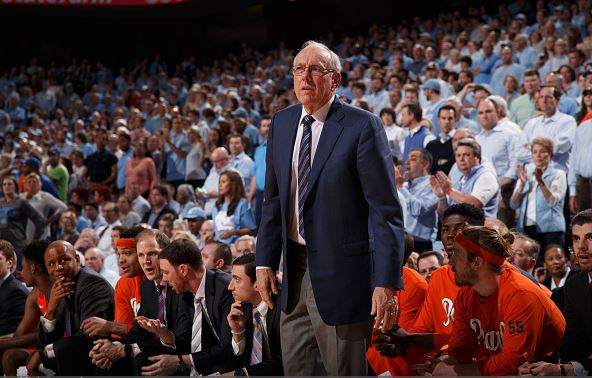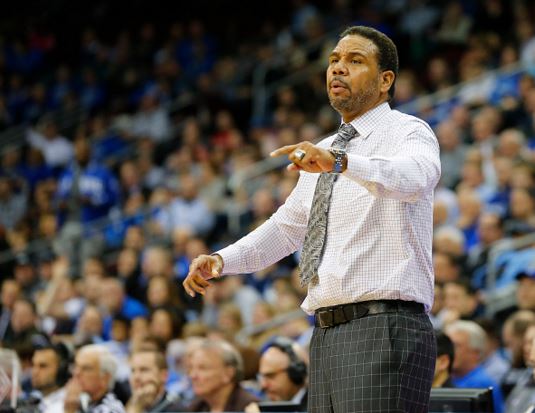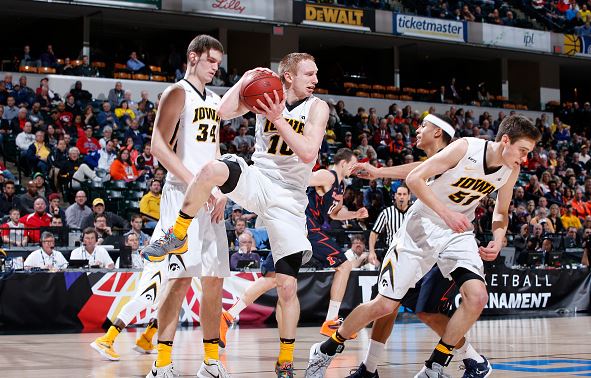The madness is finally upon us. Many love the month of March. Not because of a birthday, not because of Saint Patrick's Day, and not even because of the beginning of Spring. But they love this month because of March Madness. The NCAA Tournament is one of the most exciting sporting events in the entire world. On any given day, any team can win. The amount of upsets is outrageous. 67 games played in roughly three weeks is the cause for madness. Single-elimination gives every team in the field a chance.
Now we all know the one through four seeds in each region are the real deal. They earned their seed and each one of them will be a tough out. Each year we fall in love with a "Cinderella" team. Upsets come in bunches as well. Higher seeds show their true colors and collapse early. So the following is the contenders and pretenders for the rest of the field, region by region.
Midwest Region

Contenders in the Midwest Region are the Butler Bulldogs, Syracuse Orange, and Gonzaga Bulldogs.
Butler is the ninth seed in this region, but do not be fooled by the seed. The Bulldogs can score in bunches, averaging 80.6 points per game. They have a three-headed dragon with Kellen Dunham, Kelan Martin, and Roosevelt Jones. Leading the Big East in three-point percentage at 39 percent, the Bulldogs are not afraid to shoot it. Butler is also among the best in the nation at taking care of the ball. They turn the rock over less than 10 percent of the time.
Syracuse comes in at the 10 seed in the Midwest. Many believe they snuck in, but they could surprise those people. Boasting four double-digit scorers, Syracuse is no stranger to offense. Michael Gbinije is a nightmare for opposing defenses. The 6' 7" point guard does it all for the Orange, averaging 17.8 points, 4 rebounds, 4 assists, and 2 steals per game. Trevor Cooney, one of the best shooters in the country, loves the big moment as well. Not to mention, that 2-3 zone has bothered teams all year. They held ACC opponents to less than 29 percent from deep.
Gonzaga snagged the 11 seed. Mark Few does it year in and year out. The Zags are led by forwards, Kyle Wiltjer (20.7 points per game) and Domantas Sabonis (17.4 points, 11.6 rebounds per game). While Wiltjer kills you from the outside, Sabonis is a force in the paint. They have the size to compete with anyone in the country. Eric McClellan prides himself on his defense and has the ability to lock up the best players in this tournament. Never count out the Zags.
The lone pretender in the Midwest region may be a surprise. The Texas Tech Red Raiders are riding a hot streak coming into this tournament, but they will cool off. While they are very balanced on offense, no one player shows the ability to take over a game. Teams that succeed in March need a showtime player to lean on. The Red Raiders also struggle on the boards. Don't forget their scoring differential for the season is only +2.6 points per game. Look for Texas Tech to get bounced early on.
West Region

The West region contains two contenders, Northern Iowa Panthers and North Carolina Wilmington Seahawks.
Northern Iowa was awarded the 11 seed. Watch out, the Panthers are undefeated against top-25 teams. Wes Washpun (14.3 points, 5.2 assists per game) leads this Northern Iowa squad. He is not one to shy away from the bright lights either. While size and rebounding may be a scare, the Panthers have history of success in March. They have won at least one game in each appearance under Ben Jacobson.
The Seahawks from Wilmington, North Carolina run a revolutionary system that is familiar to the best team in the NBA, the Golden State Warriors. UNC-Wilmington adopted the effective small-ball approach. They may struggle defending the paints and grabbing rebounds. However, they limit three point attempts and opponents do not shoot well against them. Small-ball makes for an effective perimeter defense and a spread offense. The Seahawks shoot better than 48 percent from the floor. Every guy on the floor is a threat from deep.
The Texas Longhorns and Oregon State Beavers are pretenders for the West region.
Texas, the sixth seed, may have played the toughest schedule in America and they beat some very good teams. Guard play is outstanding, but how far can a team go if they struggle on the boards? Rebounds are such a big factor in winning games, especially in March. The Longhorns aren't the best when it comes to score differential either, only averaging a +3.2 difference. Limit the guards, grab boards, and the Longhorns are going home.
Oregon State was towards the bottom-half of a sub-par PAC-12 conference this year. A few big wins got them in, but many did not believe they would be awarded a seven seed. Led by Gary Payton II (15.9 points, 7.9 rebounds, 5.1 assists per game), the Beavers have a primetime player. But, they struggle rebounding by grabbing less than 35 rebounds a game. Free throws are also an area in dire need of improvement, shooting 67 percent from the stripe. With that being said, they will need much more than just "Glove Junior" to win in March.
East Region

The Providence Friars and Michigan Wolverines are the real deal, no matter the seeding.
The Friars have a dynamic-duo in Ben Bentil (21.2 points, 7.8 rebounds per game) and Kris Dunn (16.3 points, 6.4 assists per game). While this duo is scary, the depth of the Friars is a concern because they only play about seven guys consistently. Shooting poorly isn't as much of a concern because Providence is excellent at making points out of turnovers. They are one of the best in the nation at getting to the charity stripe as well. Providence can be a force in this tournament.
Michigan may have snuck their way into the madness, but they have the ability to go far. Four double-digit scorers on one team is a problem for opponents. Especially with the versatility of the Wolverines. Guards, Caris Levert and Derrick Walton Jr., are the do-it-all guys for this team. Meanwhile they also have sharp-shooters and pure scorers in forwards, Duncan Robinson and Zak Irvin. The Wolverines are not afraid to let it fly from deep, as they shouldn't be shooting 38 percent. The lone concern is inside where they are vulnerable.
Even though they have impressed this year, the Wisconsin Badgers are faking their ability to compete. Yet again, rebounding is huge in March and the Badgers are low on the totem pole of rebounding. Not to mention, they aren't the scariest team to defend. Besides Nigel Hayes, no other player really shows the scoring prowess. The streak of success for Wisconsin in March ends in 2016.
South Region

Two teams that may surprise in the South region are the Iowa Hawkeyes and Vanderbilt Commodores.
The seventh-seeded Hawkeyes have slumped lately. Defense has been a struggle late in the year. Whether it be due to fatigue or whatever, it has to turn around if they want to win. The factors that make Iowa scary is their ability to take care of the ball and shoot the long ball. Shooting better than 38 percent from deep and only turning the ball over less than 10 percent are great things to excel in. Jarrod Uthoff (18.9 points, 6.4 rebounds per game) has what it takes to put his team on his back as well.
Vandy has under-achieved much of this season, but everyone gets a new life in March. The Commodores boast size, depth, and threats from beyond the arc. Kevin Stallings will go nine or 10 players deep on his bench. Damian Jones controls the paint and allows Luke Kornet to stretch the floor and kill teams from deep. Both being seven-footers causes matchup problems. Vandy torches the net at a 39 percent clip from deep. Keep in mind that many analysts picked Vanderbilt to make the Final Four in the pre-season.
Rounding out the South region, the not-so-real teams are the Colorado Buffaloes and Temple Owls.
Tad Boyle has these Buffaloes out-rebounding opponents left and right. Colorado is also shooting a PAC-12-best 39.2 percent from deep. However, the Buffs don't shoot well inside the arc. Turning the ball over almost 14 times a game will be a travesty as well. Teams that can battle on the boards and like to run will have no problem outing the Colorado Buffaloes.
Temple found its way in but the nation isn't sure how competitive the Owls will be. Temple takes care of the ball very well, but that might be the only thing they excel at. They have a very slim point differential of +1.3 points per game. Shooting around 40 percent from the field, including less than 34 percent from deep, shows struggle to get it going on the offensive end. They aren't bad at rebounding, but they also aren't that impressive. Temple seems to be looking at an early exit from March Madness.
Enjoy The Big Dance!
At the end of the day, all 68 teams in the field have a chance at cutting down the nets in Houston. However, some teams are more favored than others. Some teams are also more equipped for a title run than others. But what makes March great is the single-elimination antics that can have a top-seeded team on a flight home in the first weekend. Kick back, relax, and let the madness begin.





































